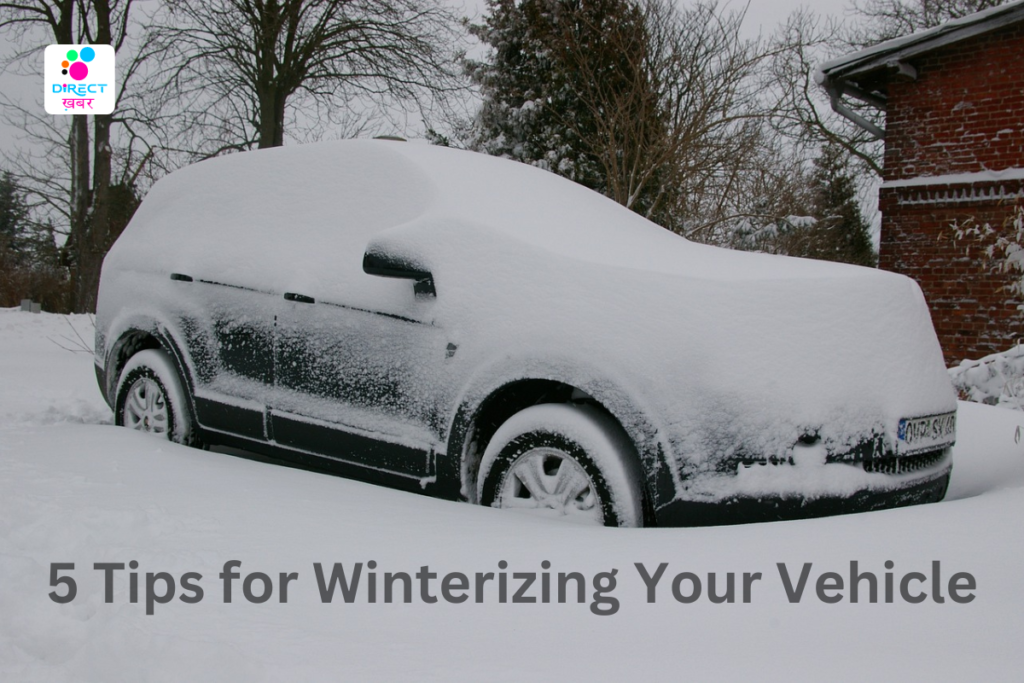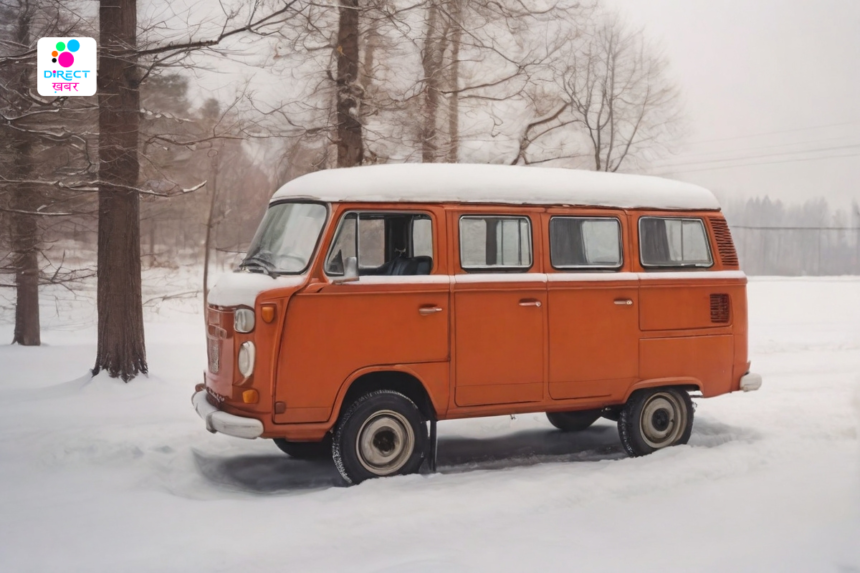Here are five suggestions for preparing your vehicle for winter conditions
Winter can be a challenging season for vehicles, with cold temperatures, icy roads, and harsh conditions putting additional strain on your car. Proper winterization is essential to ensure your vehicle operates safely and efficiently throughout the colder months. Here are five comprehensive tips to help you winterize your vehicle effectively:

- Inspect and Maintain Your Battery:
The battery is one of the most vulnerable components of your vehicle during winter. Cold temperatures can reduce its efficiency, making it harder for the engine to start. Before winter sets in, inspect the battery for signs of corrosion, loose connections, or any other damage. Clean the battery terminals with a wire brush and a solution of baking soda and water to remove any corrosion. If your battery is several years old or showing signs of weakness, consider replacing it before the cold weather arrives. Additionally, ensure that your alternator and charging system are working properly to keep the battery charged. - Check Your Antifreeze and Coolant:
Antifreeze, also known as coolant, plays a crucial role in preventing your engine from freezing in cold temperatures. Before winter arrives, check the level and condition of your vehicle’s antifreeze. You can use an antifreeze tester to determine the concentration of coolant in the system, ensuring it is at the proper level to protect your engine. If the coolant is dirty or diluted, flush the system and replace it with a fresh mixture of antifreeze and water according to the manufacturer’s recommendations. This will help prevent your engine from overheating in cold weather and protect it from corrosion. - Inspect Your Tires:
Tires are your vehicle’s only contact with the road, making them critical for safe driving during winter. Start by checking the tire pressure regularly, as cold temperatures can cause tire pressure to drop. Underinflated tires can reduce traction and fuel efficiency, so inflate them to the recommended pressure listed in your vehicle’s owner’s manual or on the driver’s side door jamb. Additionally, inspect the tread depth of your tires and look for signs of wear or damage. If the tread depth is below the recommended minimum or if you notice any cracks, bulges, or punctures, it’s time to replace your tires. Consider switching to winter tires for better traction and handling in snow and ice conditions.

- Prepare an Emergency Kit:
Winter weather can be unpredictable, and you may find yourself stranded on the road due to adverse conditions or mechanical issues. Prepare an emergency kit to keep in your vehicle in case of an unexpected situation. Your emergency kit should include items such as a blanket, extra clothing, non-perishable food and water, a flashlight with extra batteries, a first aid kit, a shovel, ice scraper, jumper cables, a portable phone charger, and flares or reflective triangles. Additionally, consider adding sand or kitty litter to provide traction if your vehicle gets stuck in snow or ice. Having these essentials on hand can help keep you safe and comfortable until help arrives. - Perform Regular Maintenance:
Regular maintenance is essential for keeping your vehicle running smoothly, especially during winter. Schedule a comprehensive inspection with a qualified mechanic before the onset of winter to address any potential issues. Pay attention to the following areas:
- Oil and Filter: Ensure that your oil is clean and at the proper level, as cold temperatures can thicken oil and make it less effective. Consider switching to winter-grade oil for better performance in colder climates.
- Brakes: Have your brakes inspected to ensure they are in good condition and responsive. Cold weather can affect braking performance, so it’s essential to address any issues before they become a safety concern.
- Lights: Check all exterior lights, including headlights, taillights, brake lights, and turn signals, to ensure they are working correctly. Visibility is crucial during winter, so replace any bulbs that are dim or burnt out.
- Heating and Defrosting System: Test your vehicle’s heating and defrosting system to ensure it is working correctly. A functional heater and defroster are essential for keeping you warm and maintaining visibility in cold weather.
- Wipers and Washer Fluid: Inspect your windshield wipers for signs of wear and replace them if necessary. Also, make sure your windshield washer fluid reservoir is filled with a winter-grade solution that won’t freeze in cold temperatures.
By following these comprehensive tips for winterizing your vehicle, you can ensure that your car is prepared to handle the challenges of winter driving safely and reliably. Taking the time to properly maintain and prepare your vehicle for winter can help prevent breakdowns, accidents, and unnecessary stress during the colder months.






